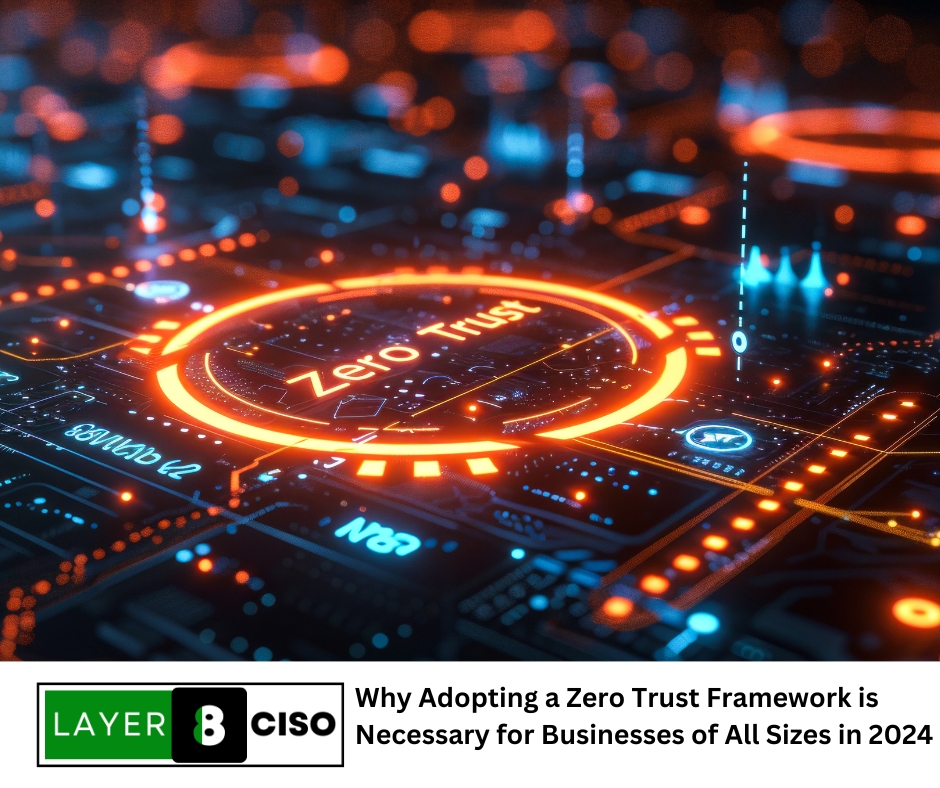Why Adopting a Zero Trust Framework is Necessary for Businesses of All Sizes Now
In today’s rapidly evolving digital landscape, the traditional “trust but verify” approach to cybersecurity is no longer sufficient. Cyber threats are becoming more sophisticated, and data breaches more prevalent. As businesses of all sizes face these increasing risks, adopting a Zero Trust framework is not just a strategic advantage; it’s a necessity.
The Changing Cyber Threat Landscape
The cyber threat landscape has undergone a seismic shift in recent years. Cybercriminals are employing more advanced tactics, leveraging AI and machine learning to launch more targeted and effective attacks. Additionally, the rise of remote work and cloud services has expanded the attack surface, making it harder to protect sensitive data and systems.
What is Zero Trust?
Zero Trust is a security model that operates on the principle of “never trust, always verify.” Unlike traditional security models that assume everything inside an organization’s network can be trusted, Zero Trust requires strict identity verification for every person and device trying to access resources, regardless of whether they are inside or outside the network perimeter.
Why Businesses of All Sizes Need Zero Trust
- Protection Against Advanced Threats: Zero Trust provides robust protection against sophisticated cyber threats. By continuously verifying identities and monitoring for abnormal behavior, it helps prevent unauthorized access and detects potential breaches before they cause significant damage.
- Enhanced Data Security: With data breaches becoming increasingly common, protecting sensitive information is paramount. Zero Trust ensures that only authenticated and authorized users can access data, minimizing the risk of exposure.
- Support for Remote Work: The shift to remote work has made traditional perimeter-based security models obsolete. Zero Trust secures remote access by requiring strong authentication and continuously monitoring user activity, ensuring that employees can work securely from anywhere.
- Regulatory Compliance: Many industries are subject to stringent data protection regulations. Zero Trust helps businesses comply with these regulations by implementing strong access controls and ensuring that data is only accessible to those who need it.
- Scalability and Flexibility: Zero Trust frameworks are scalable and adaptable to the needs of businesses of all sizes. Whether you’re a small business or a large enterprise, you can implement Zero Trust principles to enhance your security posture.
Steps to Implementing Zero Trust
- Identify and Classify Assets: Understand what assets need protection, including data, applications, and services. Classify them based on their sensitivity and importance to the business.
- Implement Strong Authentication: Use multi-factor authentication (MFA) to verify user identities. This adds an extra layer of security by requiring users to provide multiple forms of verification.
- Adopt Least Privilege Access: Ensure that users have the minimum level of access necessary to perform their tasks. Regularly review and adjust access permissions to prevent privilege creep.
- Continuous Monitoring and Analytics: Implement tools to continuously monitor user activity and network traffic. Use analytics to detect anomalies and respond to potential threats in real-time.
- Micro-Segmentation: Divide your network into smaller, isolated segments. This limits the lateral movement of attackers within the network and contains potential breaches.
- Educate and Train Employees: Cybersecurity is a shared responsibility. Regularly train employees on security best practices and the importance of adhering to Zero Trust principles.
Conclusion
Adopting a Zero Trust framework is no longer an option but a necessity for businesses of all sizes. As cyber threats continue to evolve, the Zero Trust model provides a comprehensive and proactive approach to securing your organization’s data and systems. By implementing Zero Trust, businesses can protect against advanced threats, support remote work, ensure regulatory compliance, and ultimately build a more resilient cybersecurity posture.
At Layer 8 CISO, we specialize in helping businesses transition to a Zero Trust security model. Contact us today to learn how we can assist you in fortifying your defenses and safeguarding your digital assets.
Contact Layer 8 CISO for further information on implementing a Zero Trust framework in your organization. Together, we can build a more secure future.

